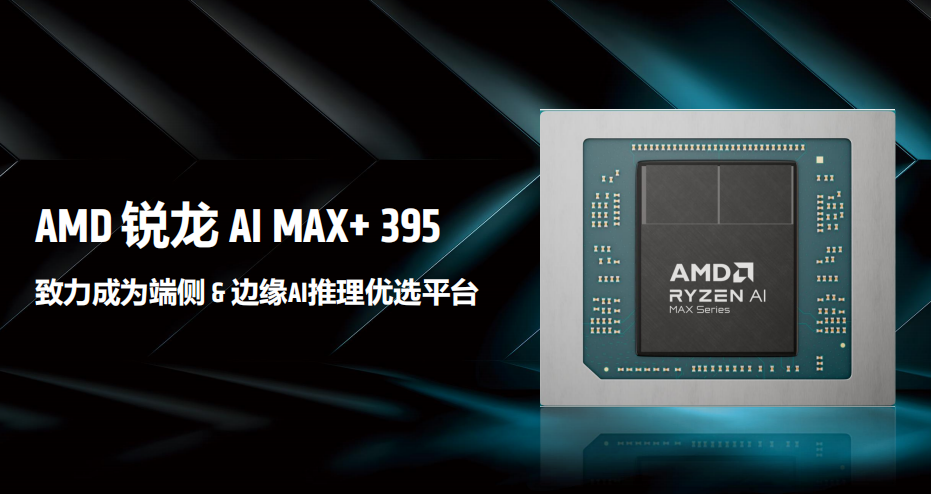Select Language:
Recently, desktop AI supercomputers equipped with NVIDIA’s new GB10 Grace Blackwell super chip, branded as DGX Spark, have hit the market. As NVIDIA’s first product based on the lightweight Grace Blackwell architecture, the DGX Spark isn’t just about stacking performance; it’s designed as a comprehensive solution for high-performance workstations, desktop AI development, and lightweight data centers. By combining a compact form factor with support for large models, NVIDIA aims to bridge the gap between consumer-grade graphics cards and large-scale data center processing power.
Initially announced earlier this year under the project code DIGITS, the first version of the DGX Spark was priced at around $3,999—roughly 28,500 RMB. Its small, NUC-like size paired with an impressive 1 PetaFLOP (1000 TOPS) of FP4 sparse AI computing power stirred significant industry discussion about high-performance desktop AI. Now, with its official launch, major brands like ASUS, Dell, and Lenovo are offering models priced above 32,000 RMB.
The debut of the DGX Spark naturally invites comparisons to another emerging desktop AI solution: an AMD-based Mini AI workstation featuring the Ryzen AI Max+ 395 processor. Both aim to deliver desktop-level AI capabilities and support large model inference locally. So, how do these two products compare in architecture and performance? More importantly, which one better suits entry-level developers with limited budgets and multi-scenario needs? Let’s delve into the details.
Architecture and Performance Breakdown:
To understand their applicability, it’s crucial to analyze their core chips—NVIDIA’s GB10 and AMD’s Ryzen AI Max+ 395—in terms of architecture and real-world performance. Despite both targeting high-performance computing, their design philosophies differ significantly, influencing their ease of use for beginner developers.
NVIDIA GB10: A Mini Data Center Powerhouse
The GB10 chip is essentially a scaled-down version of NVIDIA’s flagship Grace Blackwell super chip. It’s engineered to operate within limited physical space and power constraints—totaling around 240 watts—and still perform some roles traditionally handled by large data center systems.
Its CPU component is a collaboration with MediaTek, powered by a 20-core ARM v9.2 architecture, comprising ten high-performance Cortex-X925 cores and ten energy-efficient Cortex-A725 cores. The GPU contains 6,144 CUDA cores, a streamlined version of the Blackwell design, supporting FP4 data formats to achieve up to 1 PetaFLOP in sparse AI calculation—about 31 TFLOPS in FP32 performance, comparable to consumer-grade graphics cards like the RTX 5070.
Memory-wise, the chip includes 128GB of LPDDR5x-9400 unified memory via 2.5D packaging, with CPU and GPU sharing this high-bandwidth memory through NVLink C2C links operating at up to 600 GB/s, facilitating rapid data exchange. Connectivity is bolstered by a high-speed ConnectX-7 200Gb/s network card, allowing multiple DGX Spark units to be linked for large models with up to 405 billion parameters.
Running a customized Linux-based DGX OS preloaded with NVIDIA’s AI software stack, the system is tailored primarily for Linux environments and doesn’t support Windows or x86 software directly.
AMD Ryzen AI Max+ 395: A Versatile Desktop AI Engine
Contrastingly, AMD’s Ryzen AI Max+ 395 is designed as a flexible, all-scenario AI processor optimized for desktop use. Its architecture combines a 16-core, 32-thread Zen 5 CPU running up to 5.1GHz, with 80MB total cache, providing performance on par with high-end desktop chips suited for multitasking and data preprocessing.
It supports up to 40 RDNA 3.5 GPU compute units with bandwidth of 256GB/s, performing at levels comparable to mobile RTX 4060/4070 graphics cards—ideal for graphics-intensive AI inference. The embedded XDNA 2 NPU pushes up to 50 TOPS, supporting Windows 11 AI features and tools like Copilot.
Memory architecture employs AMD’s unique Unified Memory Architecture (UMA), supporting up to 128GB of DDR5 RAM, with dynamic memory sharing that eliminates the traditional bottleneck of separate CPU and GPU memory, thereby accelerating large model loading and inference.
This platform is natively compatible with Windows, allowing seamless operation with mainstream software such as Office, Photoshop, and popular AI frameworks like TensorFlow and PyTorch—without the need for Linux expertise. It also supports Ubuntu, offering versatility for different development environments.
Performance Tests and Practical Insights:
Performance comparisons, including recent third-party benchmark tests, reveal interesting insights. A notable test on October 16 involved running various large language models on both platforms. Surprisingly, AMD’s Ryzen AI Max+ 395 slightly outperformed NVIDIA’s DGX Spark in several scenarios, such as inference speed with Llama 3.3 70B, where AMD achieved 4.9 tokens/sec compared to NVIDIA’s 4.67 tokens/sec. AMD also demonstrated faster first-token response times across most tests, suggesting smoother interactive AI experiences.
For medium to large models like Qwen 3-30B and GPT-OSS 20B, AMD’s platform delivered comparable, if not superior, inference speeds, emphasizing its practical value for developers working with such models. These real-world results point to AMD’s platform being highly competitive in entry-level AI deployment.
Ecosystem and Cost-effectiveness:
Beyond raw performance, ecosystem compatibility and cost play pivotal roles. NVIDIA’s DGX Spark runs on a customized Linux system, which benefits seasoned AI researchers familiar with Linux but presents steep compatibility challenges for conventional Windows-based users. Most daily business software, from Office suites to Adobe Creative Cloud, is optimized for Windows, making the Linux environment less accessible for newcomers.
In contrast, AMD’s platform operates on the widely used x86 architecture and Windows OS, ensuring easy integration into existing workflows. It supports common development tools, AI frameworks, and office applications out of the box, reducing learning curves and setup times.
Market availability also differs markedly. The DGX Spark, launched just last October, remains a niche product with limited market presence, while AMD-based Mini AI workstations have already flooded the market. They come in various configurations—some priced around 10,000 RMB with 64GB RAM, suitable for personal use, and others near 20,000 RMB with 128GB RAM aimed at small teams—available on major online platforms like JD and Tmall. Many are preloaded with AI tools, making them ready to run immediately.
Cost-Performance Analysis:
Cost efficiency is vital for beginners and small teams. According to third-party benchmarks, AMD’s Ryzen AI Max+ 395 offers significantly better value per RMB. For example, a typical entry-model AMD system costing about 15,000 RMB delivers inference speeds around 64 tokens/sec, translating into approximately 43 tokens/sec per 10,000 RMB. Meanwhile, NVIDIA’s higher-priced offerings around 30,000 RMB provide roughly 21 tokens/sec for the same investment—more than double the performance per unit cost from AMD.
Furthermore, AMD’s ecosystem tends to incur lower long-term expenses. Windows-based software remains largely free or low-cost, and AMD’s partners provide cloud testing platforms, minimizing the need for large upfront hardware investment.
Additional Considerations:
Regarding model compatibility and expansion, AMD’s close collaborations have resulted in rapid adaptation to new models—such as GPT-OSS-120B—often on the day of release, ensuring developers aren’t delayed. Hardware flexibility also favors AMD; their systems support multiple unit connections via USB4, allowing large models with hundreds of billions of parameters to run smoothly, whereas NVIDIA’s single interconnect solutions are more limited and costly.
Summary:
Overall, the choice between NVIDIA’s DGX Spark and AMD’s Ryzen AI Max+ 395-driven Mini AI workstations boils down to user needs. NVIDIA’s offering provides a highly optimized, enterprise-grade environment suitable for specialized research, especially for users already embedded in the CUDA and Linux ecosystems. Its higher price point reflects this premium.
On the other hand, AMD’s solutions deliver versatile, cost-effective performance suited for entry-level developers, small teams, and hobbyists. They benefit from a mature software ecosystem, broader compatibility with everyday tools, and a wider range of available hardware options—making AI more approachable for newcomers.
As AI development moves toward mass adoption, affordable, user-friendly platforms like AMD’s are poised to democratize access, helping more enthusiasts create and innovate without the burden of complex setups or prohibitive costs. For developers eager to jump into AI on a budget, AMD’s Ryzen AI Max+ 395-based Mini AI workstations present an attractive, ready-to-use option that embodies the spirit of accessible artificial intelligence.






